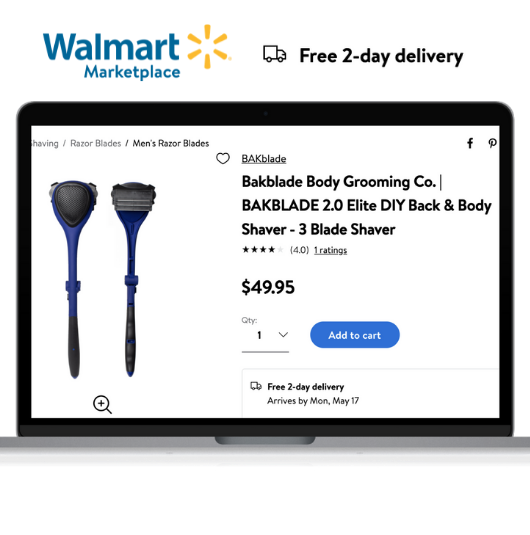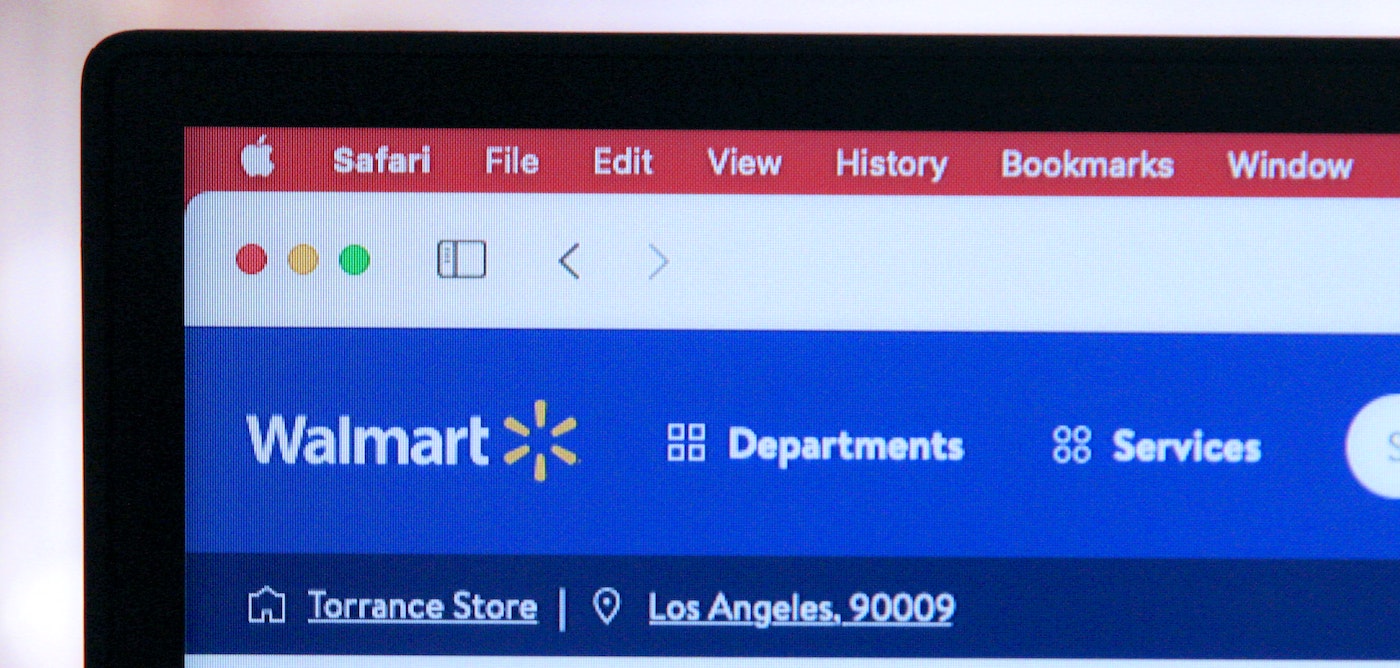Table of Contents
** Minutes
What makes Walmart’s supply chain so successful?
With a revenue of over $570 billion, Walmart continues to rank number one on Fortune’s Global 500 list. This marks their ninth consecutive year at the top position, making Walmart the largest company in the world by revenue.
Walmart’s success can be attributed to having their own supply chain to streamline fulfilment and cut down on costs. It also provides them with more control over their logistics network.
In this article, we take a closer look at the Walmart supply chain and why it continues to be so successful decades later.
What makes Walmart’s supply chain so successful?
Walmart’s supply chain success can be attributed to their tactful decisions to start investing in the right initiatives, including technology and expanding their logistics network, to provide value in the ecommerce space.
Below we break down the various initiatives that has made Walmart’s supply chain successful.
Early investment in supply chain optimisation
Walmart’s focus on optimisation is one of the largest factors contributing to the brand’s supply chain success.
The retail giant is constantly striving to improve existing systems and processes to create an optimised and efficient supply chain to provide their customers with “everyday low prices” — one of the company’s unique (and renowned) selling points.
Among the many supply chain optimisation strategies, the company places great emphasis on omnichannel — multiple channels available to its customers. Walmart’s Marketplace creates a home for thousands of retail stores with the ultimate goal to save time for the consumer.
Walmart also provides multiple marketplace fulfilment options, such as in-store pickup, ship from store, and even digital pharmacy fulfilment. Globally, Walmart offers 7,000+ pickup locations and 5,000+ delivery locations.
Fine-tuning the supply chain management system
Walmart is constantly striving to improve their supply chain management system.
From the get-go, the company started removing links within the supply chain and purchased goods in bulk to be transported directly to their stores.
They then began working directly with manufacturers and distributors to cut out the middleman to further streamline the supply chain.
This approach plays a key role in their supply chain success. With fewer players in the supply chain, the company can lower costs and cut back on lead times to offer quick and affordable fulfilment.
Developing strong relationships with vendors early on
Walmart’s strong relationships with vendors have played a major role in their supply chain success. They go straight to the source and identify vendors who can provide them with the best price and can meet their high-volume demands.
Walmart establishes strategic partnerships with these vendors, guaranteeing them consistent business through long-term, high-volume purchases. In return, the company can enjoy wholesale prices, which keeps customer prices competitive throughout the years.
To further strengthen these relationships, Walmart also establishes open communication networks with their vendors. This allows them to improve the flow of inventory within the supply chain and anticipate possible disruptions before they escalate into larger problems, such as backorders, stockouts, and delivery delays.
Outsourcing inventory control with vendor managed inventory (VMI)
Walmart has further strengthened and simplified their supply chain by implementing a vendor management inventory (VMI) model.
VMI involves suppliers managing their own inventory that’s stored in Walmart’s warehouses. With this approach, the company puts the responsibility of managing inventory in the hands of suppliers, so they can save time and money on inventory management.
With an electronically backed VMI system, suppliers have access to Walmart’s inventory data, allowing them to keep track of real-time inventory levels and sales. This makes it easy monitor how much stock is available and how certain products are sold.
Based on this information, they can see when they need to send more inventory to Walmart and keep their stock replenished.
This simplified inventory management model results in fewer delays in replenishment and reduces stockouts. It’s particularly useful since Walmart deals with hundreds of thousands of SKUs from thousands of suppliers, which can get complicated and expensive to manage.
By transferring some of the inventory control activities to the vendors, the company can save time and focus on tasks that need to be handled in-house.
It also means that Walmart doesn’t need to spend more on dedicated personnel to manage the inventory coming from each supplier, which results in lower costs for them. All Walmart has to do is monitor the transport of inventory from warehouses to their stores.
Capitalising on the power of technology
As Walmart undergoes a digital transformation, they’re making extensive investments in supply chain digitization and infrastructure. These investments have contributed to the successful supply chain that we see today.
Between 2019 and 2020, 72% of Walmart’s strategic capital expenditures were attributed to supply chain transformation, which includes supply chain technologies, infrastructure, and ecommerce. During this period, the company spent more than $11 billion.
These investments have resulted in faster, more flexible fulfilment, and more accurate demand forecasting.
Walmart also uses technology in their initiative to reduce packaging waste. Packaging algorithms make it easier to find the right-size packaging for each product by accurately capturing product dimensions and other attributes.
Additionally, Walmart has implemented an advanced warehouse management system (WMS) in their distribution centres. This more nuanced WMS supports better inventory control and labour planning to streamline their supply chain operations.
Overall, one of the largest technological investments they’ve made is in automation. Autonomous mobile robots are helping warehouse staff move pallets, while other automation tools are used for picking items or packing them inside containers.
Walmart has also made significant investments in sortation equipment, which will automatically sort products and allocate them to the right locations within the warehouse. Robust warehouse control systems help to establish a link between these automation equipment and the WMS.
Walmart and ShipBob’s winning fulfilment combo
ShipBob is an official Walmart partner and participates in Walmart’s TwoDay delivery program.
ShipBob’s fulfilment platform integrates with Walmart Marketplace to display free 2-day delivery badging and fulfils 2-day orders approved by marketplace sellers.
Here is how ShipBob’s integration with Walmart works.
Two-day shipping


By connecting ShipBob with Walmart, businesses can provide two-day shipping with 100% coverage across the continental United States.
You can connect your Walmart store to ShipBob in minutes, sync your inventory, and choose what fulfilment centre locations to send inventory to.
Your “Free 2-day delivery” badge will appear prominently near the “Add to Cart” button, which captures attention and generates, on average, 50% more conversions.
ShipBob’s on-time delivery rate is over 95%, which provides merchants with reliability and speed.
“DTC is our bread and butter, and with ShipBob we can offer 2-day shipping, gift notes, and other aspects of the modern delivery experience that consumers want.”
Aaron Patterson, COO of The Adventure Challenge
Warehousing
ShipBob offers warehousing solutions to help you manage your inventory more efficiently. When you outsource fulfilment to ShipBob, our team of fulfilment experts take care of the entire process of receiving, storing, and managing your inventory.
By storing your inventory across one or more fulfilment centre location, you benefit from lower warehousing costs while also improving delivery speeds.
Once ShipBob receives your inventory and orders are placed on Walmart.com, they are automatically sent to ShipBob to be picked, packed, and shipped.
From the ShipBob fulfilment platform, you can track activity, manage SKUs and inventory levels across locations, and view storage costs.
“ShipBob’s analytics are a huge bonus for a merchant looking to partner with a single 3PL that has a built-in order management tool. I was so stoked about being able to see the optimised layout of where you should be distributing your inventory is great.
Having inventory and warehouse management capabilities built into your 3PL is such a value-add, especially for smaller companies.”
Juliana Brasil, Director of Operations at Food Huggers
Inventory management
ShipBob’s inventory management tools further simplify the fulfilment process by providing a single dashboard to view real-time inventory levels across locations.
With real-time insight into inventory, you can get ahead of inventory replenishment, access data to improve demand forecasting, and make better business decisions.
You can even keep track of the number of units sold per day, so you know when to prepare for inventory replenishment. From the ShipBob dashboard, you can use the inventory data available to set reorder points to prevent stockouts.
Walmart integration
ShipBob’s integration with Walmart improves product visibility on Walmart Marketplace while also having your orders fulfilled through ShipBob.
Thanks to ShipBob’s omnichannel fulfilment capabilities, your inventory levels are updated in real time to reflect the purchases across all your sales channels, including Walmart. This way, you don’t end up accidentally selling more products than you have in stock.
With the Walmart integration, you can get your products in front of millions of customers and provide a seamless order fulfilment experience.
To learn more about how ShipBob partners with Walmart, contact ShipBob today.
Walmart supply chain FAQs
Here are answers to the top questions about Walmart supply chain.
Does Walmart have its own supply chain?
Yes, Walmart has one of the largest supply chains in the world. Their nuanced supply chain establishes a more direct relationship between vendors and end consumers. Walmart runs their own distribution centres and partners with logistics companies like ShipBob to further expand their supply chain network.
What is Walmart’s supply chain strategy?
Walmart’s supply chain strategy is highly focused on direct, long-term relationships with manufacturers, distributors, and ecommerce businesses. The goal is to reduce the number of touchpoints within the supply chain to reduce lead times and speed up fulfilment. Walmart also heavily invests in supply chain technology to improve efficiency and accuracy throughout their network.
What are the advantages of selling on Walmart Marketplace?
Selling on the Walmart Marketplace will give you access to the retailer’s 120+ million monthly customers. This means you can get your products in front of a massive audience, which will improve the chances of boosting sales. Moreover, the Walmart Marketplace doesn’t charge you any monthly fees. Marketplace fees are commission-based, which means you only pay a fee when you make a sale.



